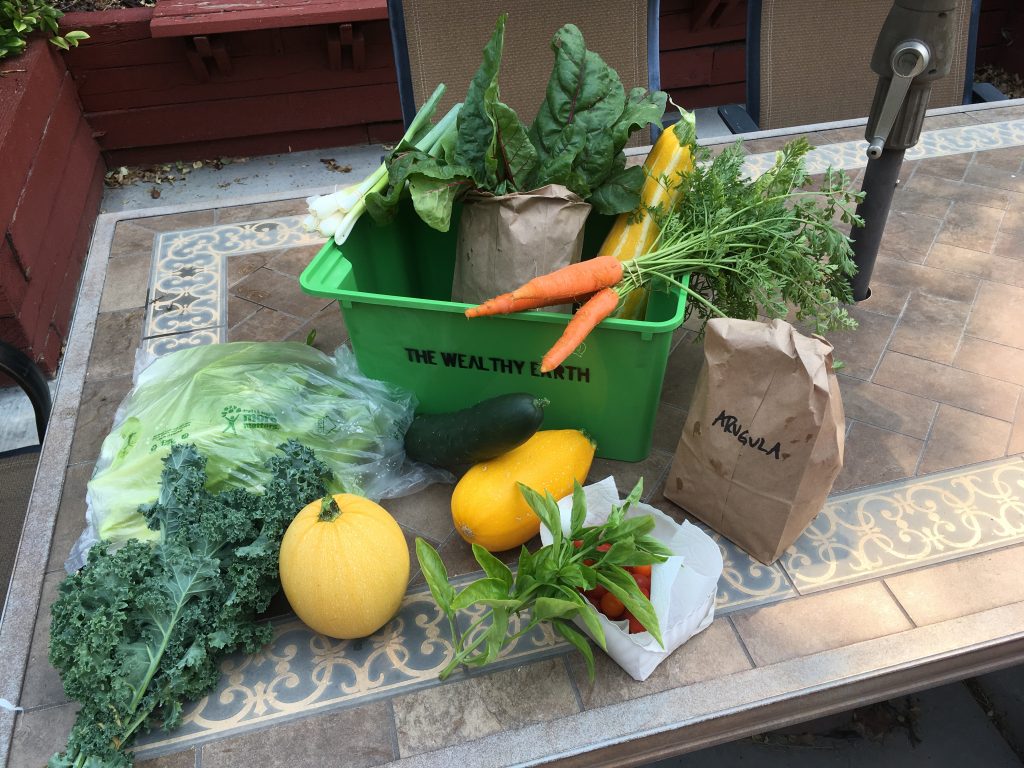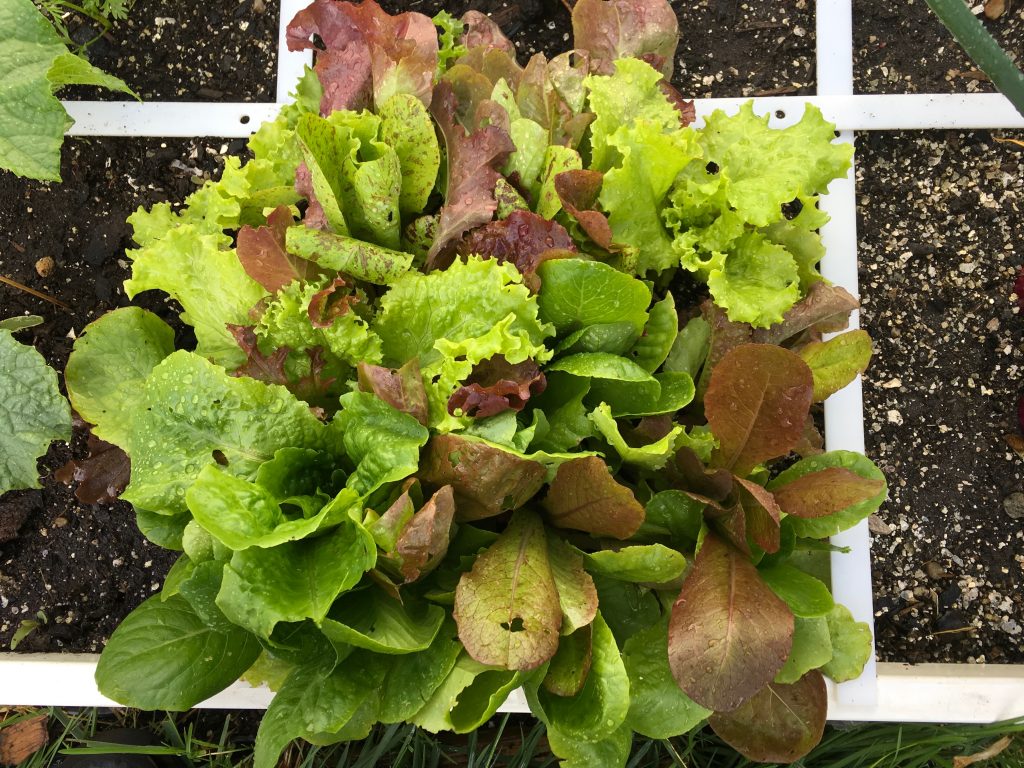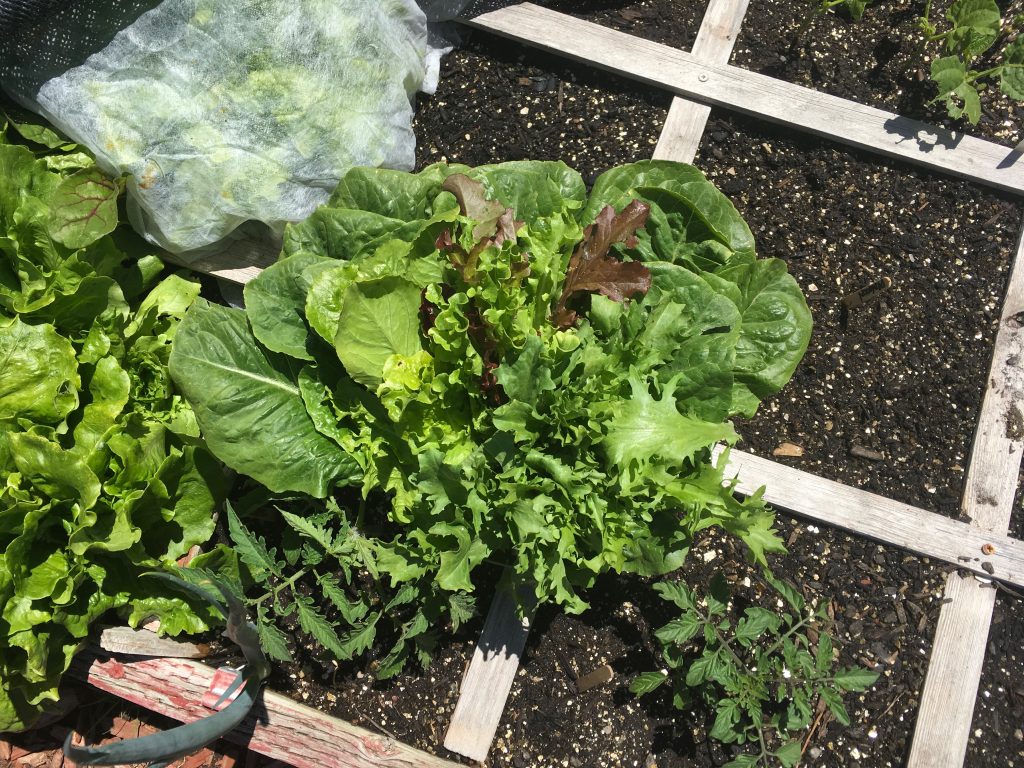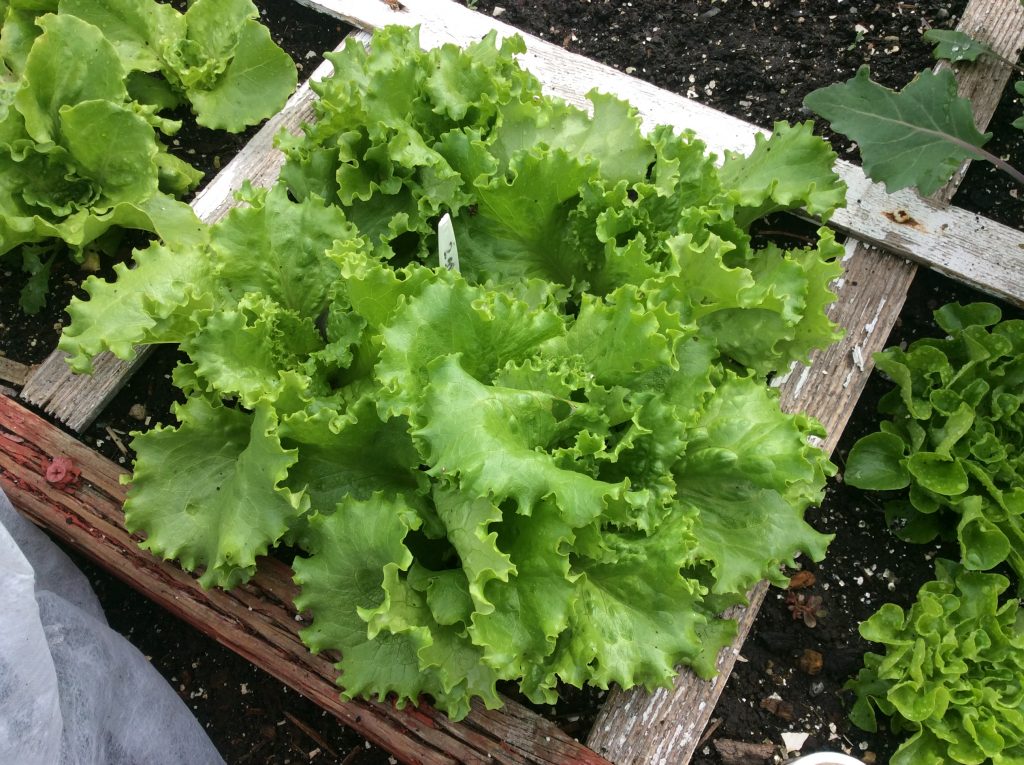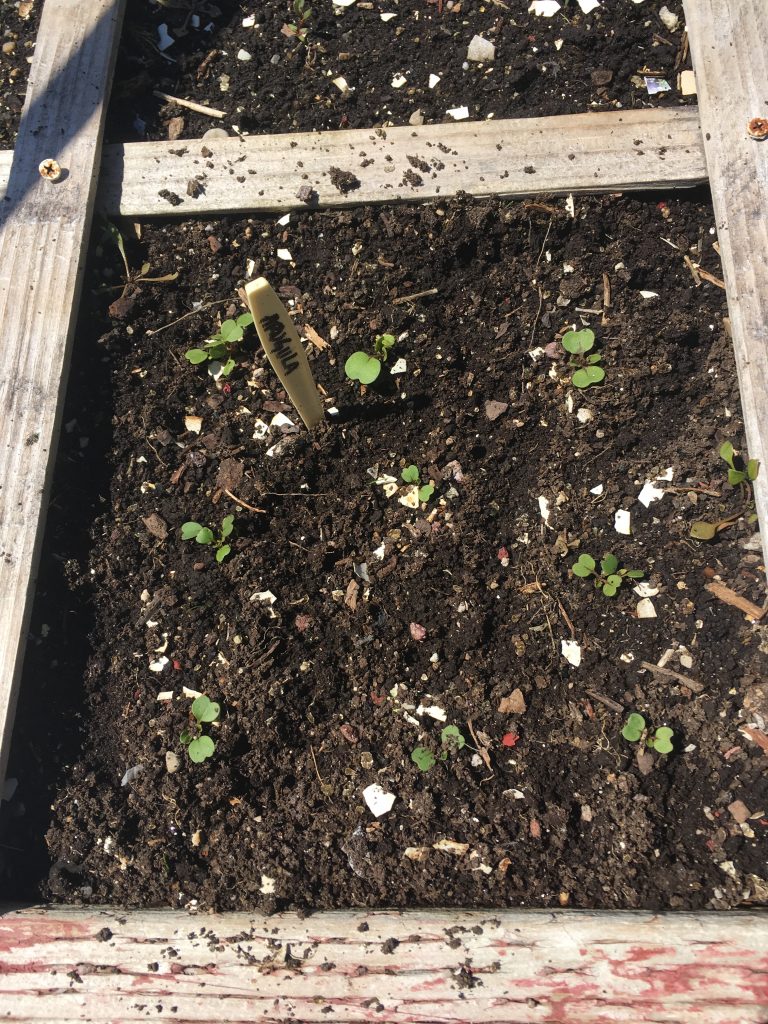Just a sampling of what my neighbor customers get every Saturday morning. Not much work really, just several washes of the greens and off they go. The one item that’s been very surprising is the small yellow squash in front. Angel hair spaghetti squash. This was my first year growing it, and it’s just delicious. You can read all about it here. Give it a go next year, you won’t be disappointed.
Chard, arugula, zucchini, basil, cherry tomatoes, golden egg squash, green onions, cucumber, kale, lettuce and carrots.[ois skin=”1″]

